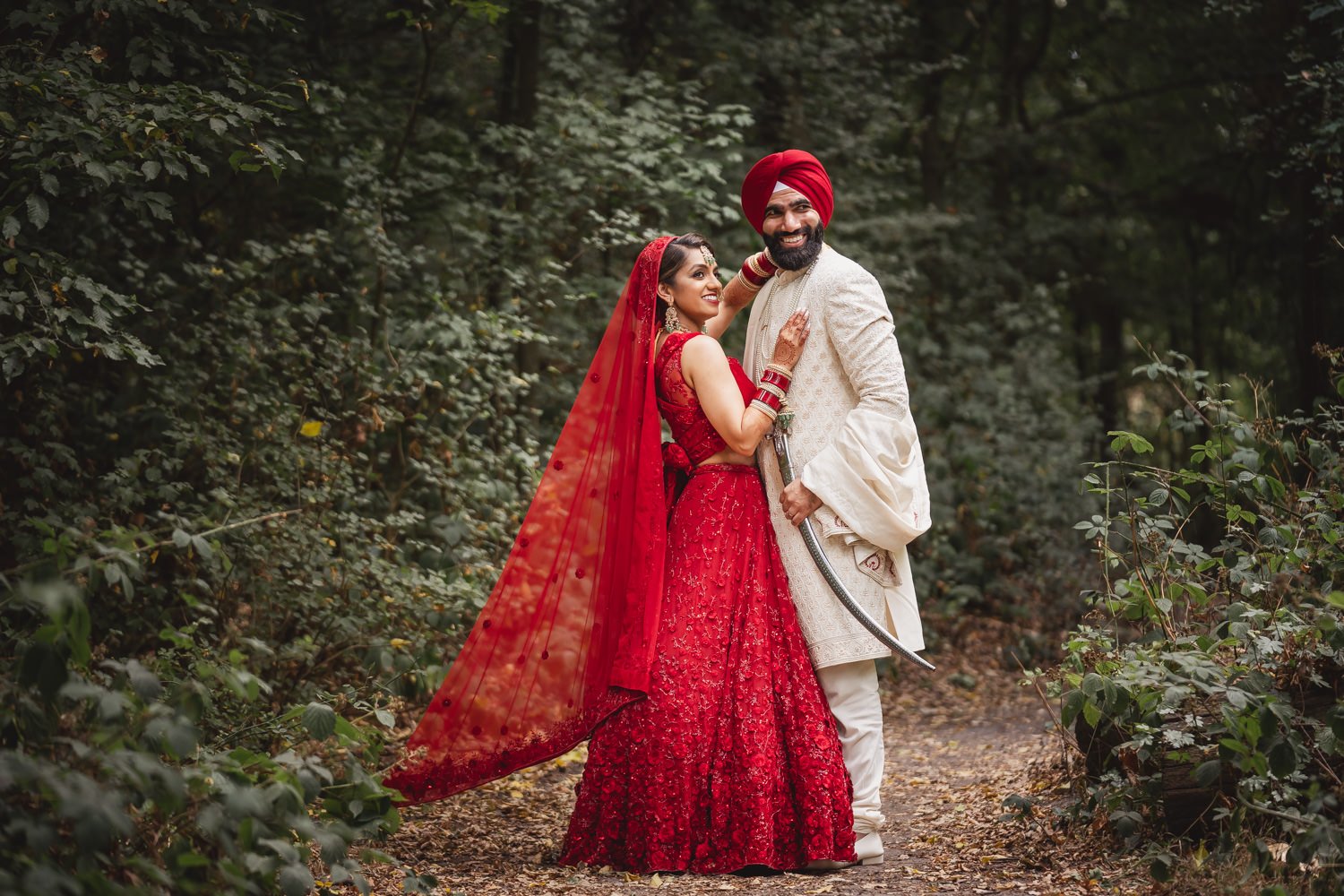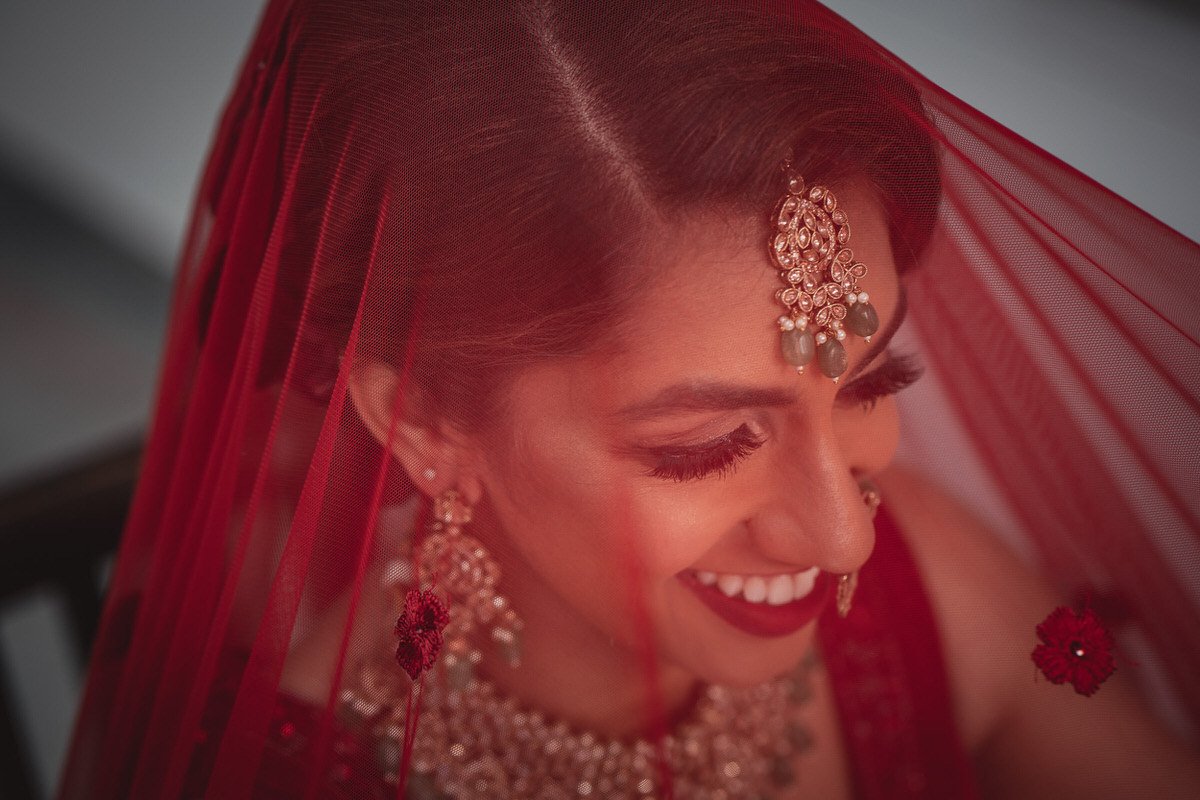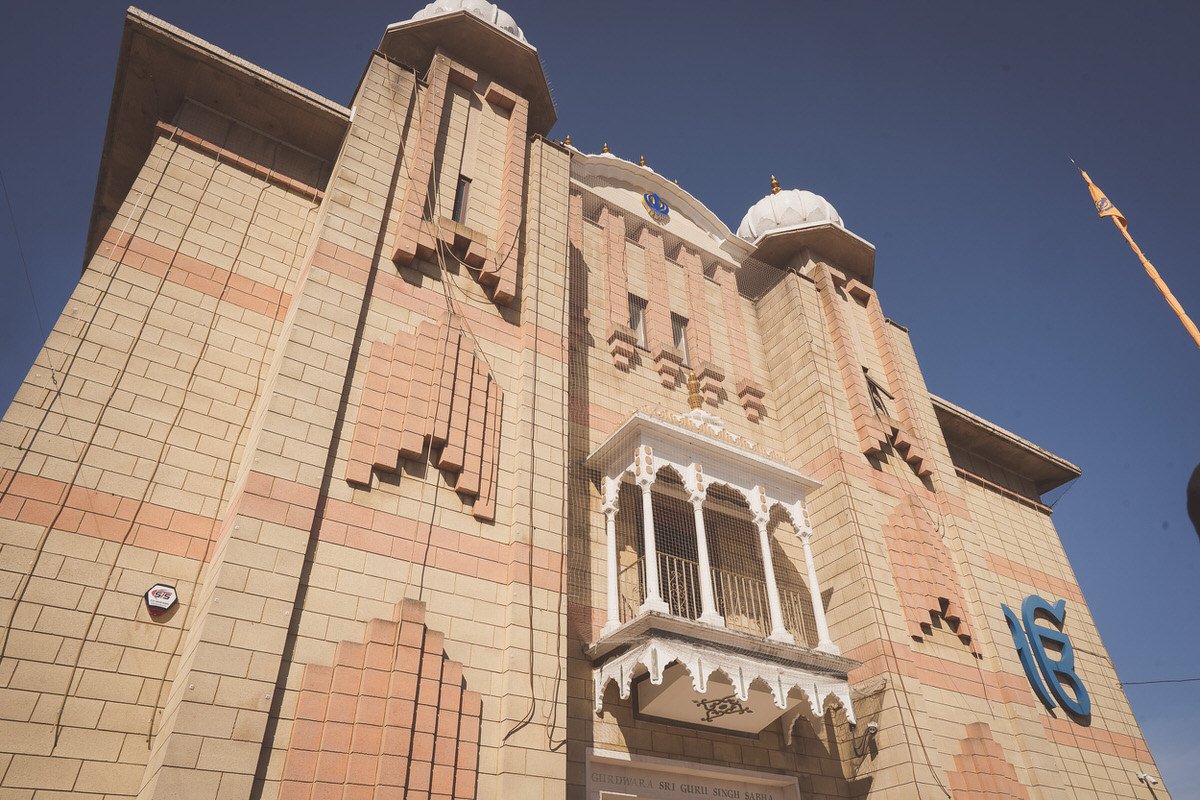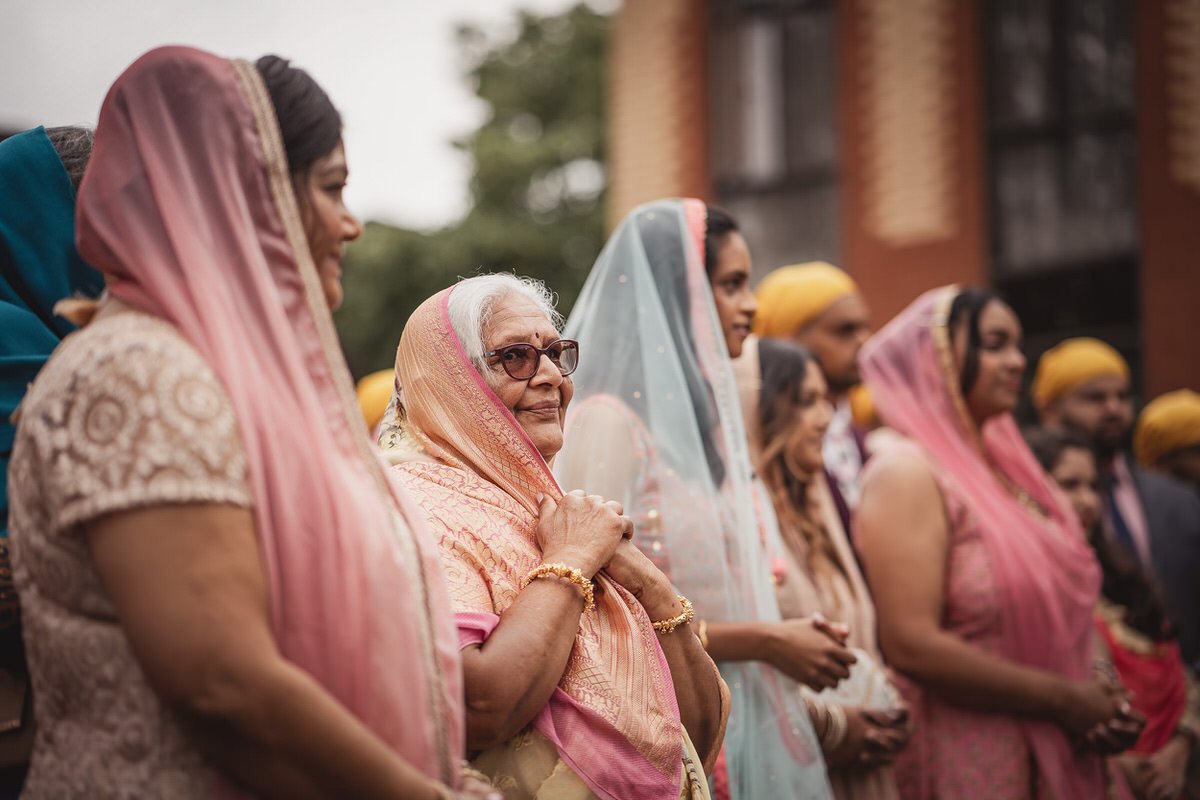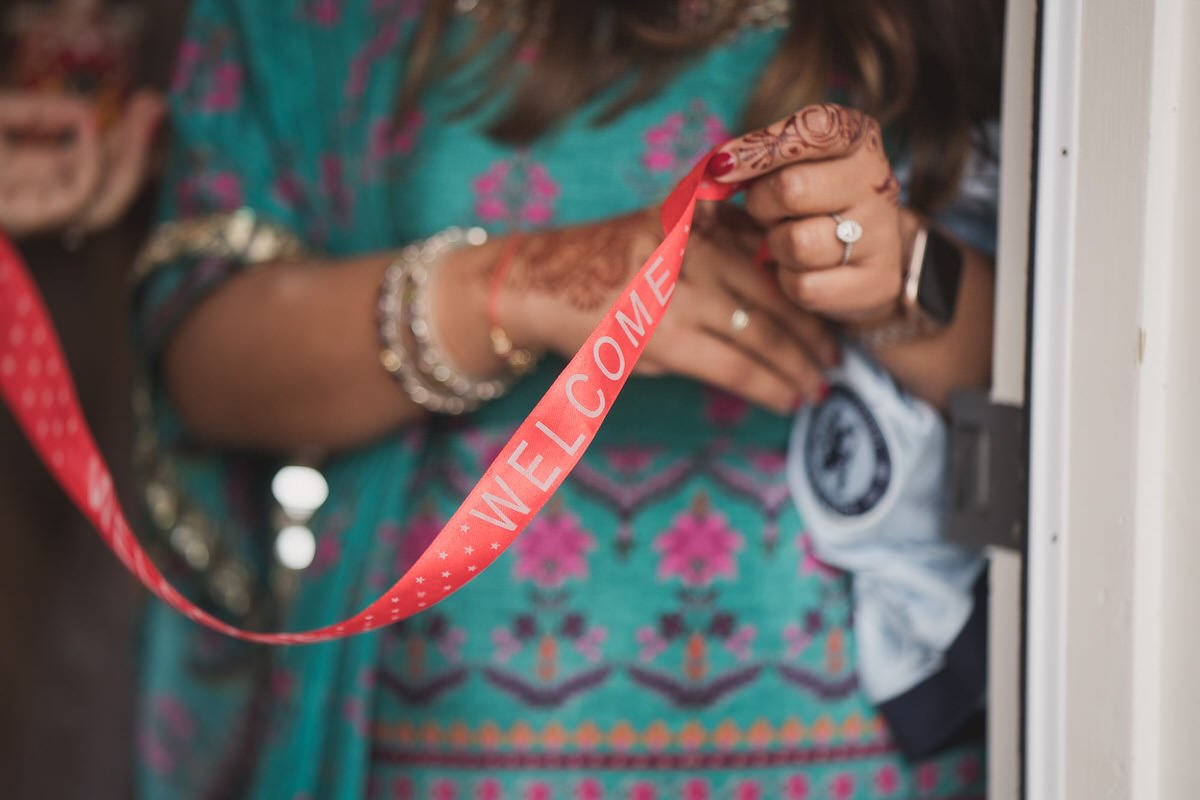
Sikh Wedding Traditions: Guide to Punjabi Wedding Rituals
Ultimate Guide to Sikh Weddings from an Indian Wedding Photographer
Sikh weddings are an absolute pleasure to capture. With over a decade of experience as an Indian wedding photographer, I've developed a deep appreciation for everything that Sikh weddings embody: the vibrant colours, the profound rituals, the heartfelt customs, and the dynamic atmosphere that characterizes these celebrations.
I've had the privilege of photographing Sikh weddings in London, across the UK, and around the globe, which has enriched my understanding of the customs and traditions unique to Sikh ceremonies. Let's explore the joy, spirituality, and customs that make Sikh weddings so distinct and memorable. Whether you're planning your own Sikh wedding, attending one as a guest, or simply curious about what sets Sikh weddings apart, this look into Sikh weddings will give you a comprehensive glimpse into these remarkable occasions.
The Origin and Significance of Sikh Weddings
The Anand Karaj
The Anand Karaj, which is the heart of a Sikh wedding, started way back in the 16th century. It began during the time of Guru Amar Das Ji, the third of the ten Sikh Gurus. Then, Guru Ram Das Ji, the next Guru, made it an official ceremony. This wasn't just any wedding ceremony; it was created to show what Sikhism is all about - unity and treating everyone equally. This was a way for Sikh weddings to stand out and show their unique identity compared to other wedding traditions around at that time.
At the center of a Sikh wedding is this beautiful idea of partnership and respecting each other. The couple walks around the Guru Granth Sahib, which is a very important religious book for Sikhs. This isn't just about promising to stay together; it's about agreeing to follow the faith's teachings together.
Sikh Weddings
Sikh weddings, or Anand Karaj, are special. They're not just about two people getting married; they're about two souls connecting on a deeper level. Imagine two best friends promising to help each other become their best selves, aiming for big goals like being super kind and close to what they believe is divine. During the wedding, they listen to four special songs that talk about growing together in love and staying true to each other. It's like a reminder that being together means more than just sharing a home; it's about sharing a path of kindness, loyalty, and spiritual growth.
Why Sikh Weddings Are Incredible
Sikh weddings are like a big, beautiful blend of traditions that teach us about love, respect, and staying spiritually awake. Here’s a sneak peek into what makes these weddings so awesome:
Akhand Paath: This is when the whole Sikh holy book is read out loud, non-stop. It kicks off the wedding celebrations by filling the air with positive vibes and blessings.
Maiyaan: Imagine getting a spa day at home with a special turmeric paste! It's done before the wedding to make the bride and groom look their best, symbolizing a fresh start.
Jago: This one’s a party before the party! Families dance and sing with a fancy pitcher, getting everyone pumped up for the big day.
Mehndi: A beautiful art show on the bride's hands and feet with henna. It’s not just for looks; there's a playful twist where the groom’s name is hidden in the design for him to find.
Sikh weddings are about celebrating together, starting a journey of love and spiritual growth, and, of course, having a lot of fun along the way. It’s like being part of a big, happy story where everyone comes together to support the couple in their new adventure.
At the heart of Sikh wedding traditions is the Anand Karaj—the blissful ceremony. As the centrepiece, it encapsulates the essence of Sikh matrimonial philosophy, highlighting the couple's journey towards unity with each other and within their faith. It is a ceremony observed with solemn respect, usually within a Gurdwara, the Sikh place of worship.
The Baraat: Arrival of the groom, accompanied by his entourage, greeted with a mixture of melodious singing and warm hospitality.
The Milni: A formal introduction and exchange of garlands amongst family members, symbolising the merging of two families.
The Anand Karaj Ceremony: The core of Sikh wedding traditions, where the bride and groom sit side-by-side, signifying equality, while sacred hymns are sung and their marriage is solemnised by taking four symbolic walks around the Guru Granth Sahib.
The Langar: Following the ceremony, a communal meal is served to all those in attendance, underlining the principles of equality and shared community in Sikhism.
Completion of the marriage ceremony launches the post-wedding traditions, rich with emotion and celebration. The Doli, an especially poignant moment, sees the bride bidding farewell to her birth family to join her new family, an event marked with both tears and joy. The festivities then continue with a reception filled with dance, music, and feasting—a grand affirmation of the newlyweds' journey forward together.
Understanding these ceremonies provides not only a glimpse into the profound tapestry of Sikh wedding traditions but also a touchstone for the values that underpin the Sikh way of life—a commitment to faith, family, and community, celebrated with utmost reverence and exuberance.
The Role of the Gurdwara in Sikh Weddings
The Gurdwara, a place of worship and community for Sikhs, plays a pivotal role in the tapestry of Sikh weddings. It is here where the sacred ceremony of Anand Karaj is solemnised, enveloped by hymns and customary rituals. Understanding the significance of this venue and the associated religious protocols adhered to during the matrimonial process is essential for couples preparing to embark on this significant journey.
Choosing the Perfect Gurdwara for Your Ceremony
Finding a Gurdwara that resonates with a couple's values and logistical needs is often the first step in planning a Sikh wedding. Many factors come into play, from the location and size to the Gurdwara's historical significance. Couples might consider:
The proximity of the Gurdwara to family and guests
The capacity of its main hall to accommodate the expected number of attendees
Availability of facilities for pre-wedding and post-wedding events
Connection to a specific Sikh community or heritage
Religious Protocols to Follow at the Gurdwara
Adherence to religious protocols is paramount during Sikh weddings to ensure the sacredness of the ceremony is kept intact. It's important for everyone involved, from the couple to the guests, to be mindful of the customs upheld within the Gurdwara. Some of the key protocols include:
Arriving with a head covered, as a mark of respect in the presence of the Guru Granth Sahib
Maintaining modest attire, aligning with the decorous atmosphere of the Gurdwara
Observing silence and respect during the Anand Karaj ceremony
Partaking in the Karah Prasad and Langar, if offered, as a gesture of communal inclusion
Being attentive to these religious protocols not only honours the traditions of Sikh weddings but also enriches the experience, creating a solemn and memorable occasion for all present.
Auspicious Pre Wedding Events in Sikh Culture
As the wedding day approaches, a profusion of pre wedding events unfolds, serving as the prelude to the marriage ceremony in Sikh culture. Each event is drenched in tradition and excitement, heralding the coming together of two families. Among these celebratory rituals, the Kurmai and the vibrant Mehndi and Sangeet ceremonies hold a special place, encapsulating the joy, spirituality, and cultural richness of the impending union.
Rituals of the Kurmai (Engagement)
The Kurmai is essentially the formal engagement ceremony marking the commitment between the bride and groom. Rich in symbolism, this ceremony is anchored in the familial bonds that are at the heart of Sikh culture. During the Kurmai, key rituals take place, such as the exchange of rings, which signifies the couple's pledge to one another, as well as the presentation of the 'Kara'—a steel bracelet that stands for strength and integrity—to the groom. Families also exchange gifts and sweets as tokens of good will and blessings.
The Vibrancy of the Mehndi and Sangeet Ceremonies
Mehndi Ceremony: One cannot overlook the quintessential Mehndi event, characterized by intricate henna patterns painted on the bride's hands and feet. This ceremonious art is not just about aesthetic appeal but also symbolises joy, beauty, and spiritual awakening. The richness of the henna's colour is often said to represent the depth of love in the marital bond.
Sangeet: Perhaps the epitome of festivity leading up to a Sikh wedding is the Sangeet. A convivial evening of music and dance, the Sangeet is when families from both sides bond through performances and traditional folk songs, celebrating the happiness of the soon-to-be wed couple. The air resonates with the rhythm of dholki beats and the melody of heartfelt songs, making it a truly memorable part of the pre-wedding celebrations.
Together, these celebrations weave the initial threads of unity and joy that will culminate in the sacred bond of marriage, embodying the cultural splendour integral to Sikh matrimonial festivities.
Understanding the Significance of the Anand Karaj Ceremony
The Anand Karaj stands at the heart of Sikh wedding traditions, encapsulating the quintessence of matrimonial harmony and spiritual ethos. This revered Sikh wedding ceremony is not merely an exchange of vows but a consecrated orbit where love, equality, and mutual respect are witnessed and pledged. To comprehend its profound significance, we delve into the core elements that make up the ceremonial tapestry of an Anand Karaj.
The First Laav - Embarking on a righteous path together, the first laav signifies the couple’s commitment to living a life in accordance with Sikh teachings and the quest for divine understanding.
The Second Laav - Symbolising the progression of love, the second laav reinforces the couple's unwavering commitment, invoking strength and unity as they walk the path of life.
The Third Laav - It is within the third laav that the couple’s souls are believed to be drawn closer to one another, deepening their devotion and cementing a bond enriched by divine love.
The Fourth Laav - The final laav culminates in a union blessed by Waheguru (the Supreme Being) where harmony, respect, and a shared spiritual journey are affirmed.
In essence, the Anand Karaj is a sublime reflection of the spiritual and worldly aspirations of Sikh couples. By cementing their relationship through these four paramount laavs, the ceremony becomes an illustration of their journey towards mutual harmony, underpinned by the enduring values that the Sikh faith holds dear. In the presence of family, friends, and the sacred Guru Granth Sahib, the ceremony is elevated beyond a mere ritual; it is a transformative experience radiating with the ethos of Sikhism.
The Anand Karaj underscores the importance of equality, with the bride and groom circling the Guru Granth Sahib as equals, in the belief that all souls are equal before the divine.
It speaks to the heart of Sikhism, emphasising that true partnership is found not only in human love but also through a shared love for the divine, a sentiment that resonates throughout the couple's married life.
Key Sikh Wedding Attire and Accessories
At the heart of a Sikh wedding, also known as a Sikh marriage or Anand Karaj, lies a rich tapestry of attire and accessories that embody the cultural heritage and elegance of the ceremony. The choice of clothing is not only a matter of beauty but also steeped in cultural significance, reflecting the dignity and sanctity of the matrimonial union.
Traditional Bridal Wear for Sikh Brides
Sikh bridal wear is an enchanting aspect of the wedding day, known for its opulence and vibrant colours. A Sikh bride typically wears a lehenga, a two-piece outfit comprising an exquisitely embroidered skirt and a matching blouse, paired with a dupatta, or long scarf, that adds grace when draped over the head and shoulders.
Fabric: Silks and velvets, embellished with intricate embroidery and often adorned with shimmering sequins and beads.
Colours: While reds and pinks are traditional, modern brides often opt for other colours such as gold, orange, and maroon.
Jewellery: Complementing the bridal wear, brides don accessories such as the kundan necklaces, chooda (bangles), and kaleere, which are symbolic and ornate trinkets attached to the bangles.
Footwear: Embroidered juttis, traditional Punjabi shoes, are chosen for comfort and style.
Groom's Attire: From Turban to Sword
The groom's attire is equally important in showcasing the heritage of a Sikh wedding. A blend of tradition and elegance, the groom's outfit is meticulously selected to match the grandeur of the occasion.
Turban: The turban, or pagri, is an article of faith and serves as a crown of spirituality and honour on the groom's wedding day. Its colour often complements the bride's outfit.
Sherwani: A long coat-like garment known as a sherwani is standard groom's attire, richly designed with embroidery to reflect the groom's status.
Kurta Pyjama: Underneath the sherwani, a kurta with pyjama offers comfort and ease during the day-long celebrations.
Ceremonial Sword: Known as a kirpan or talwar, the ceremonial sword is a sign of bravery and chivalry that is carried as a part of the groom's ensemble.
Footwear: Traditional mojaris, which are handcrafted leather footwear, complete the look.
The attire of both the Sikh bride and groom not only contributes to the visual splendour of the wedding but also serves as a representation of their commitment, honouring their ancestral customs through their choice of wedding attire.
The Sikh Wedding: A Fusion of Culture and Community
In the panorama of matrimonial celebrations, Sikh weddings, known for their vibrancy and communal harmony, stand out as extraordinary tapestries interwoven with culture and community fusion. Beyond the blissful joining of two souls, they exemplify how community serves as the foundational pillar of these festal occasions.
How Community Plays a Crucial Role in Sikh Nuptials
The essence of Sikh weddings lies in the Sangat's substantial role, a term that encapsulates the entire Sikh community. Trusted for their moral support and active involvement, the Sangat contributes significantly from the pre-wedding ceremonies through to the joyous culmination of the wedding day. This deep-seated tradition affirms the conviction that marriage is not simply a contract between two individuals but a bond that strengthens links within society.
Fostering Inclusivity and Unity at the Wedding
Nurturing a spirit of inclusivity, Sikh weddings invite participation from all guests, reflecting the egalitarian ethos at the heart of Sikh faith. From communal singing of hymns to robustly partaking in Langar — the community meal, these events forge unity and lifelong bonds. Celebrations transmute into a beautiful fusion, where diverse threads of culture seamlessly converge, validating the adage that a Sikh marriage is indeed a marriage within a community.
Planning Your Sikh Wedding: A Step-by-Step Guide
Embarking on the journey to eternal union, a Sikh wedding is a vibrant affair enfused with deep cultural heritage. For those couples preparing to weave their lives together in this honoured tradition, a meticulous approach to planning is essential. This step-by-step guide serves as a companion in organising a Sikh wedding, ensuring every detail resonates with the richness of cultural customs while catering to personal tastes. Let’s begin the voyage to your dream wedding day.
Establish Your Vision: Before leaping into logistics, reflect upon the elements you wish to encompass in your Sikh wedding. Consider size, location, and the customs that are most meaningful to you and your partner.
Setting the Date: Consult the Sikh calendar for an auspicious date. Many couples opt for dates that align with favourable lunar cycles or significant Sikh dates.
Venue Selection: Find a Gurdwara that accommodates your vision. Ensure it aligns with the size of your guest list and the depth of tradition you wish to uphold.
Pre-Wedding Rituals: Plan the pre-wedding events such as Akhand Paath, Maiyaan, and Sangeet, integrating family traditions and modern elements that reflect your unique relationship.
The Anand Karaj: Delve into the heart of planning the Anand Karaj ceremony. Allocate time for each of the four laavan, coordinating with your Gurdwara to respect ritual timings.
Attire and Accessories: Choose your wedding attire keeping in mind the elegance of tradition. From the bride's lehenga to the groom's sherwani and turban, each piece should be selected with care.
Invite List and Stationery: Formulate your guest list and design invitations that mirror the essence of a Sikh wedding, incorporating traditional motifs and elegant scripts.
Photography and Videography: Book a photographer experienced with Sikh weddings, who will capture the profound and joyous moments of your nuptials.
Catering and Cuisine: Organise a spread that honours the practice of Langar or choose a menu that incorporates both traditional Punjabi dishes and global cuisines, attending to dietary preferences and restrictions.
Decor and Ambience: Select decor that embellishes the solemnity of the occasion – from the floral arrangements to the colour themes, every detail should enhance the celebratory atmosphere.
Entertainment and Music: Curate a lineup of music and entertainment that uplifts the soul and aligns with the spirit of Sikh rejoicing.
Logistics and Transportation: Ensure seamless logistics, providing clear directions and arranging transportation for guests if necessary, to and from the Gurdwara and other venues.
Final Review and Adjustments: As your Sikh wedding approaches, review every aspect of the plan. Make necessary adjustments and confirm with vendors to ensure your special day unfolds flawlessly.
Remember, planning your Sikh wedding is as much about the journey as it is about the destination. Savor each step, infusing love and intention into the traditions that will lay the foundation for your married life. May your nuptials not only honour the sanctity of Sikh customs but also celebrate the unique bond you share. This wedding guide aims to be a trustworthy advisor through your planning process, escorting you towards a day filled with joy, love, and communal bliss.
View Recent Weddings On The Blog
Photographing a Sikh Wedding: Capturing the Essence
Immortalising the vibrant pageantry of a Sikh wedding requires not just technical skill, but an intimate understanding of the cultural tapestry that is woven into each ceremony. Adept Sikh wedding photography is all about capturing the essence of the myriad moments that collectively form this auspicious occasion. It is a celebration of both visual splendour and profound spirituality, a mélange that demands the utmost sensitivity and creativity from any wedding photographer.
Essential Shots for Sikh Wedding Photography
The bride and groom in their resplendent wedding attire.
Close-up of the intricacies in henna designs and jewellery details.
Laavan or the four circumambulations around the Guru Granth Sahib.
The joyful moments of the Sangeet and the Mehndi ceremonies.
Emotional nuances during the Vidai, capturing the myriad expressions.
Family blessings and the couple's respect for elders in the family.
A wide-angle shot of the Gurdwara setting to establish the sanctity of the location.
Candid captures of laughter, dance and the collective effervescence of the guests.
Tips for Working with a Sikh Wedding Photographer
Discuss the itinerary beforehand to ensure no significant ritual is missed.
Visit the wedding venue together to identify the best spots for important shots.
Ensure clear communication regarding the cultural do's and don'ts during the ceremonies.
Talk about the style of photography that resonates with you, be it candid or traditional.
Provide a list of must-have family pictures to avoid any post-wedding oversights.
Ask to view their portfolio to get a sense of their previous Sikh wedding photography experiences.
Rely on their expertise but also express your vision for the wedding album.
Modern Twists on Sikh Wedding Celebrations
As Sikh couples walk down the aisle, the vibrant fusion of tradition and modernity is often evident—a testament to how modern Sikh weddings honour cultural heritage while embracing contemporary elements. It's a delightful blend that caters to both the desires of the younger generation and the expectations of older family members. Here, we explore how the intricate tapestry of authenticity and innovation is woven into these joyous celebrations.
Incorporating Contemporary Elements
Embracing the current era, many couples are injecting modern vibes into their weddings without detracting from the profound spiritual essence. This includes everything from digital invitations that reflect the elegance of traditional motifs to bespoke fusion outfits which combine classic designs with a modern twist. Entertainment, too, often sees a contemporary uplift, with DJs blending Punjabi beats with global music trends to keep guests of all ages on the dance floor.
Balancing Tradition with Modern Preferences
Finding harmony between age-old customs and personal modern tastes is key in planning a wedding that is both meaningful and reflective of the couple's personalities. Some opt for eco-friendly options, like sustainable decor or plantable wedding favours, to express their commitment not only to each other but to environmental stewardship. Meanwhile, traditional Punjabi cuisine is sometimes accompanied by international dishes, offering a taste of global culture alongside time-honoured recipes.
Custom-tailored Anand Karaj ceremonies that encapsulate personal vows within the traditional structure.
Using technology to live-stream the event, enabling those overseas to partake in the festivities.
Venue decorations that meld classic Sikh floral arrangements with modern minimalist design philosophies.
As these examples show, the essence of a modern Sikh wedding lies in its ability to honour the sanctity of the past while breaking new ground for a future together. Through the respectful adaptation of contemporary elements, these weddings remain a beautiful testimony to the synergistic potential of tradition and modernity.
Guidelines for Guests Attending Sikh Weddings
Being invited to a Sikh wedding is an honour that comes with the joy of participating in vibrant customs and traditions. As attendees, one must be mindful of the cultural nuances to fully respect and appreciate the occasion. Whether you're attending your first Sikh wedding or you've been a guest before, understanding wedding etiquette is key to celebrating this auspicious event appropriately.
Etiquette and Customs to Respect
Sikh wedding guests are expected to follow certain etiquettes and customs that reflect their respect for the traditions and the families involved. These include:
Arriving on time for ceremonies, especially the Anand Karaj, which is the main wedding ritual at the Gurdwara.
Removing your shoes and covering your head before entering the Gurdwara as a sign of respect.
Participating in the Langar, a communal meal served at the Gurdwara, and understanding its significance in Sikh culture.
Avoiding alcohol and tobacco on the wedding premises, as they are prohibited in Sikhism.
Bearing in mind the modesty required within the Gurdwara setting by dressing appropriately and maintaining a demeanour that reflects the sanctity of the wedding rituals.
Dress Code: Traditional vs. Modern Attire
When it comes to Sikh wedding attire, guests are often curious about choosing between traditional and modern ensembles. The key is to balance personal style with cultural respect. Here are some recommendations:
Traditional: Traditional Indian attire, such as sarees, lehengas, salwar kameez for women, and kurta pajamas or sherwanis for men, are highly appropriate and appreciated.
Modern: If you opt for a more modern look, ensure it's respectful of the cultural setting—women should avoid overly revealing clothing, and men should wear formal suits or dress shirts with slacks.
Colours: Vibrant colours are welcomed at Sikh weddings, but it's courteous to avoid white or black as primary colours for your outfit, as they are traditionally associated with mourning.
Head Covering: Regardless of your choice between traditional or modern attire, bringing a scarf or shawl to cover your head during the Gurdwara ceremony is essential for both men and women.
In summary, attending a Sikh wedding as a guest is an opportunity to immerse oneself in the cultural richness of Sikhism. Adhering to the wedding etiquette and selecting the appropriate dress code ensures that you contribute positively to the matrimonial celebration and have a memorable experience.
Delving into the Culinary Delights of Sikh Weddings
As one ventures into the heart of Sikh wedding celebrations, the senses are greeted by an array of wedding culinary delights that embody tradition and festivity. The gastronomic journey through a Sikh wedding invites guests to not only witness love and unity but also to partake in a shared dining experience that reflects the community's rich culinary heritage.
Savouring the Traditional Langar
The Langar, a communal meal served at Sikh weddings, represents more than just shared dining; it is an expression of equality and brotherhood. All attendees, regardless of social status, are welcomed to sit together on the floor and enjoy a vegetarian feast that typically includes an assortment of Indian breads, lentils, vegetables, and rice dishes. This practice fosters a sense of togetherness and communal harmony.
Exploring Sikh Wedding Feasts and Sweet Treats
No Sikh wedding feast is complete without the delectable sweet treats that guests eagerly anticipate. Traditional confections like Gulab Jamun, Barfi, and Jalebi are not only a treat to the palate but also hold cultural significance, symbolising joy and sweetness in the lives of the newlyweds. As the courses progress, the flavoursome curries, marinated grills, and rich dals remind one of the extensive repertoire that Sikh wedding feasts offer, celebrating the union with every sumptuous bite.
Sikh Weddings and the Aspect of Social Responsibility
In the realm of Sikh weddings, an event characterised by its vibrancy and profound spiritual significance, there exists an equally important commitment to social responsibility. This dedication manifests itself through various charitable endeavours and community services, underscoring a deep-seated regard for ethical conduct in line with the principles of Sikhism. The incorporation of these elements into the matrimonial ceremonies emphasises how these joyous occasions are also opportunities for families to practice generosity and thoughtful stewardship.
Community Service: Sikh weddings often feature acts of Seva, where family members engage in selfless services such as volunteering at local Gurdwaras or participating in community improvement projects.
Charity: It is common for couples to request guests to consider donating to a charity of their choice, in lieu of traditional wedding gifts, thus spreading prosperity and assistance to those in need.
Sustainable Practices: With environmental consciousness rising, many Sikh weddings are embracing eco-friendly alternatives, prioritising the use of biodegradable materials and minimising waste, thereby ensuring the celebrations are sustainable and respectful to Mother Earth.
The ethos of Sikhism intrinsically advocates for the welfare of all, and these practices during Sikh weddings crystallise the faith's teachings into tangible and impactful actions. By intertwining social responsibility with matrimonial festivities, Sikh weddings serve not only as a beacon of love between two souls but also as a catalyst for positive social change.
Navigating the Post-Wedding Traditions in Sikh Culture
After the profound and joyful celebration of Anand Karaj, Sikh culture is embraced further through the poignant post-wedding traditions. These customs are much more than ceremonial formalities; they represent deep-rooted values and initiate the bride and groom into their new lives together. Among these, the Vidai takes a prominent place as an emotional adieu, where the bride bids farewell to her childhood home, signifying the beginning of her new journey.
The Vidai: A Bittersweet Farewell of the Bride
The Vidai is an intrinsic part of Sikh nuptials, marked by a fusion of raw emotions and ceremonial elegance. As the bride steps out, she throws back handfuls of rice over her shoulder, a gesture symbolising prosperity and gratitude to her parents. It's a bittersweet moment, laden with tears and smiles, encapsulating the duality of leaving behind one's past to embrace the future. This rite, steeped in Sikh culture, is a meaningful expression of the continuation of life's cycle.
The Doli: A New Beginning
The Doli ceremony is a poignant and deeply emotional aspect of Indian weddings, particularly in Sikh and Hindu traditions. This ceremony marks the formal departure of the bride from her parental home to her new home with her husband, symbolizing the end of her life as a daughter in her parents' house and the beginning of her journey as a wife. The term "Doli" originates from the palanquin that was traditionally used to carry the bride to her husband's home, signifying her transition into a new phase of life.
During the Doli, emotions run high as the bride says goodbye to her family and the home of her childhood. It's a moment filled with tears and tender farewells, as the bride is often accompanied by her close family members and friends, who wish her happiness and prosperity in her married life. The ceremony is not only a farewell but also a blessing, as the bride's departure is seen as a significant life event, surrounded by rituals that emphasize love, respect, and the continuation of family bonds. The Doli encapsulates the beauty and depth of Indian wedding traditions, reflecting the rich cultural heritage that values family, relationships, and the emotional journey of marriage.
Reception and Rituals that Follow the Wedding Ceremony
The conclusion of Vidai and Doli typically leads to the joyous reception, a celebration that welcomes the newlyweds into the community. The reception features a tapestry of cultural music, dance, and traditionally rich feasts. It is also an occasion for the bride to be introduced to the groom's family through playful post-wedding traditions, each epitomising the beauty and vibrancy of Sikh culture. These post-wedding traditions, from the Vidai to the reception, weave a narrative that portrays the rich cultural heritage and the auspicious beginning of matrimonial life.
Find out more about me as a Sikh and Indian Wedding Photographer.
You can find out more about me as an Indian wedding photographer here.
Take a look around my portfolio as a London-based Indian wedding photographer over on my homepage. You can view some more of my weddings and pre-weddings from the UK and around the world by viewing recent wedding work on the blog.
If you are interested in discussing your wedding plans and the possibility of working with me to tell your story, then get in touch below. I can’t wait to hear all about your plans for the big day!

